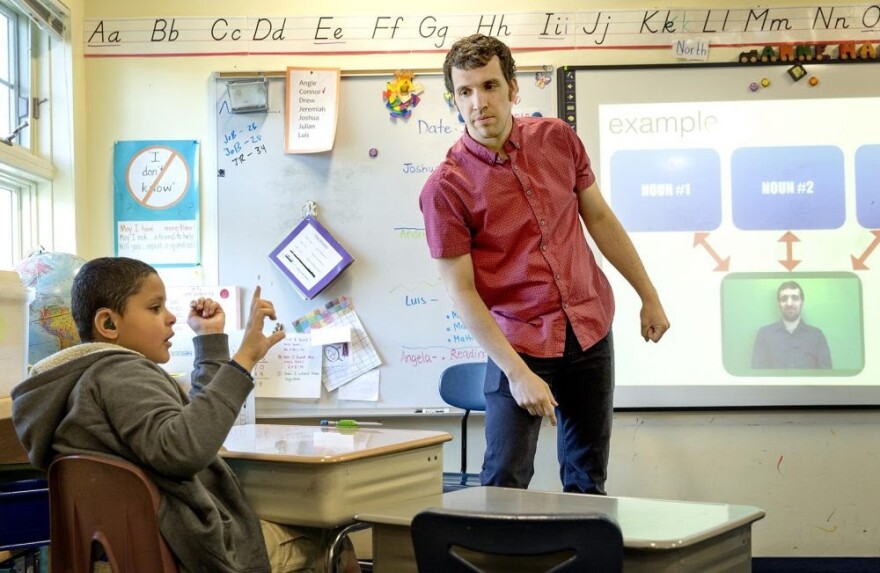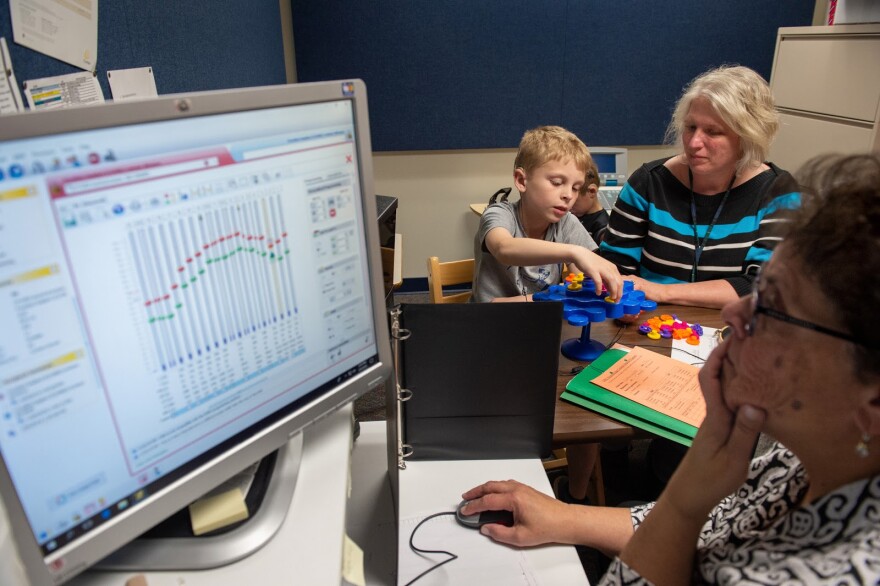This article is related to VPM’s ongoing Instagram TV series, Spectrum of Expression. Follow us on Instagram @myVPM to watch new episodes every day through the end of Deaf History Month on April 15.
Gestural communication is as natural to many children as spoken communication, and can be taught to children as their language skills develop. It can even be easier for toddlers and young children to express themselves with sign language.
Resource: Toddlers Find Their Voice in Sign Language
In many cases, d/Deaf/Hard of Hearing children face difficulties in school that their hearing peers don’t understand. It is often the responsibility of parents to advocate for their d/Deaf/Hard of Hearing child at school. Since more than 90% of Deaf children are born to hearing parents, it can be difficult for them to communicate their needs.

This can result in “language deprivation,” meaning that many Deaf children don’t have sufficient means to communicate. Language deprivation can harm other areas of development, too. If children can’t communicate their emotions, physical needs, or ask questions, it can hold them back from experiencing a full life.
Across the country, professionals are working to improve quality of life for d/Deaf/Hard of Hearing children by designing software and tools, telling more Deaf stories, and educating children about sign language. For example, researchers at Boston University are working on software to make American Sign Language easier for Deaf children and their families to learn.
Resource: Improving Sign Language Development For Children And Their Families
Other educators are taking language deprivation seriously and working to address it in their classrooms.

This story from Connecticut Public Radio shares an intimate account of hearing parents raising a Deaf child, and how they make the choices to support their child every day.

In San Antonio, PBS affiliate KLRN produces a series much like VPM’s Spectrum of Expression that teaches ASL to toddlers and children with host Emma Faye Rudkin. Emma lost her sense of hearing as a child, and turned to sign language to communicate with others. She and her service dog Hank produce educational videos and tour across the United States to present at conventions.
Author and illustrator Cece Bell tells her own story about experiencing deafness as a child in her graphic novel, El Deafo.
All of these stories point to the ongoing movement to increase awareness and acceptance of d/Deaf/Hard of Hearing children, and ultimately help these children grow and thrive.
If you want to learn more, explore these resources for you and your children:




